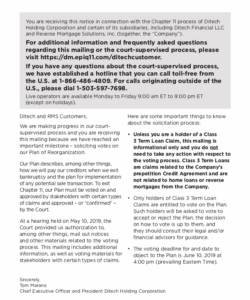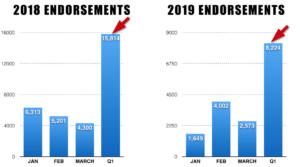The Urban Institute calls for loan servicing reform
Despite the good news last month that the backlog of HECM assignments has been cleared, significant problems remain according to the Urban Institute. “Rather than continuing to narrow eligibility—and decreasing participation further—the FHA should focus on reducing costs. Addressing losses on assigned loans would be the best step in that direction. This servicing issue is one of the biggest drivers of losses in the HECM program.” So begins the Urban Institute’s recent blog post on how FHA could more effectively stem the tide of continuing HECM claims against its insurance fund.
Much like a broken pipe dramatically reduces the reach of other sprinklers in the system, HECM borrower participation, and overall loan volume have been decimated in the wake of several cutbacks to the program in efforts to stem continued losses. The trick is finding where the leak is. Evidently, numerous reductions to the amount of money loaned (PLF factors), the financial assessment, and first-year distribution restrictions have not had their anticipated effect as projected losses continue according to HUD’s annual actuarial reports.
All which leads us to the question where’s the proverbial leak? Nearly one year ago FHA Commissioner Brian Montgomery said of HECM losses, “My sense is that it’s more on the back end in terms of the losses we are experiencing. Part of ‘triaging’ is [determining] why that is happening.”
The Senate Appropriations Committee seems to agree to instruct HUD to improve its resolution of defaulted and foreclosed FHA Home Equity Conversion Mortgage loans that have been assigned to HUD. Today 60 percent of HECM loans are not assigned to the agency. This is often due to tax delinquencies, pending foreclosures, or bankruptcies. Of the 40% of loans ultimately assigned to HUD 42% incur losses or result in an insurance claim, while only 12% for loans still with the loan servicer result in a loss. Consequently, the Urban Institute recommends that FHA’s policies be changed to allow the current servicer to manage the loan even after the loan is assigned.
HUD’s losses may be higher because they are required to pay future delinquent property taxes after the loan has been assigned. However, before a loan servicer can assign the loan property taxes must be current. In some cases, the servicer may pay the current outstanding taxes anticipating future delinquencies, and assign the loan at that time.
For most HECM professionals loan servicing goes largely unnoticed. However, the importance of effective and efficient loan servicing cannot be overstated when it comes to the verification of tax payments, borrower occupancy, and property maintenance. There have been numerous anecdotal reports of HECM properties no longer being occupied by renters or family members long after the borrower has moved or passed away. In other instances, properties are not effectively supervised and become dilapidated decreasing the value of the loan’s underlying security- the home.
Contrary to the Congressional Budget Office’s recent recommendation to assign loans much earlier at 80% of the maximum claim amount versus 98%, the Urban Institute points to a potential source of a significant number of HECM insurance claims. Would this approach fix the leak and once again place the HECM closer in reach for those who could benefit?
Urban’s blog post concludes by stating, “If the FHA were to allow existing servicers to retain the servicing for the rest of the life of the loan, it would stem these unnecessary losses. This is critical to the future viability of this valuable program for seniors.”

















